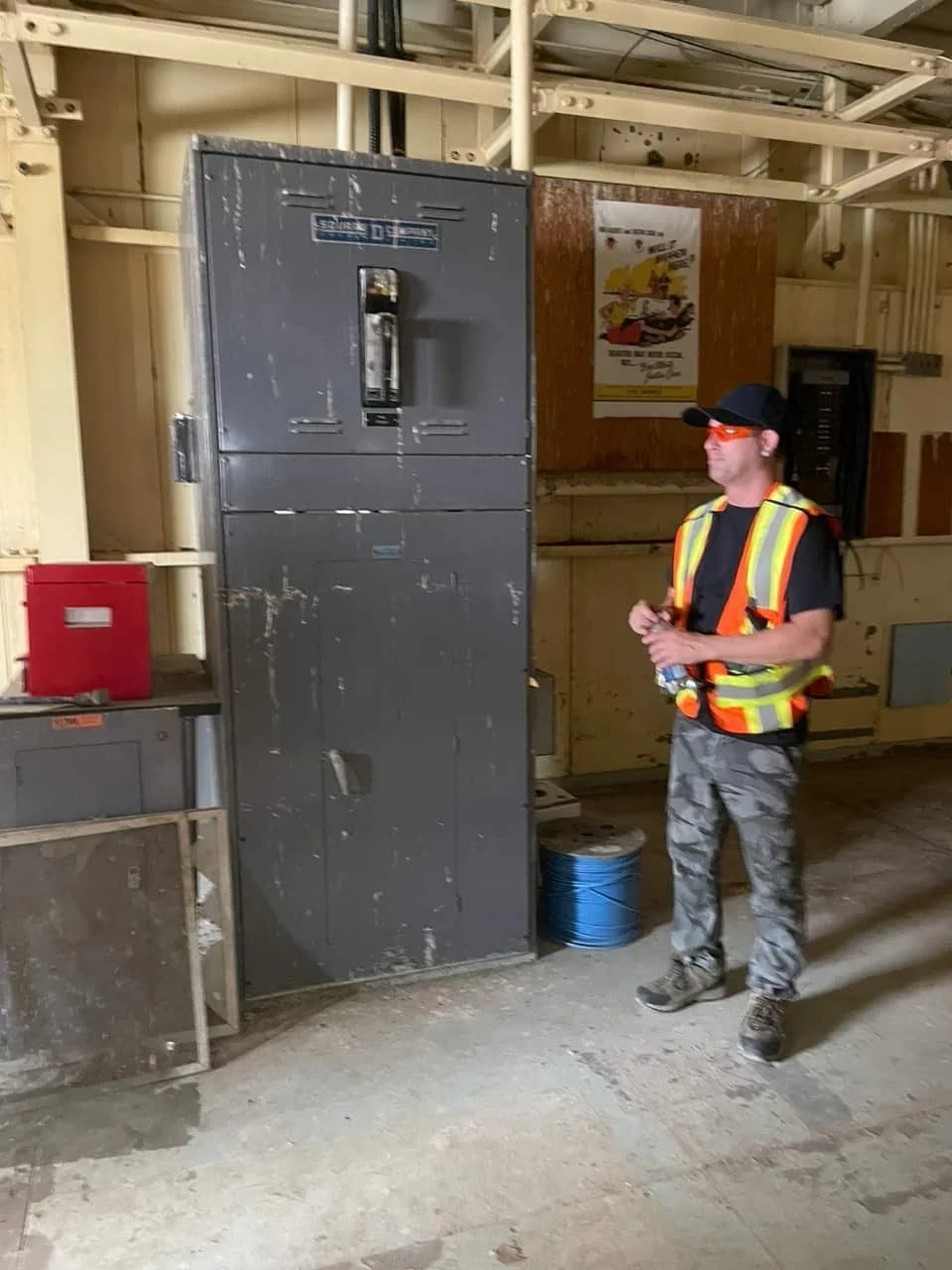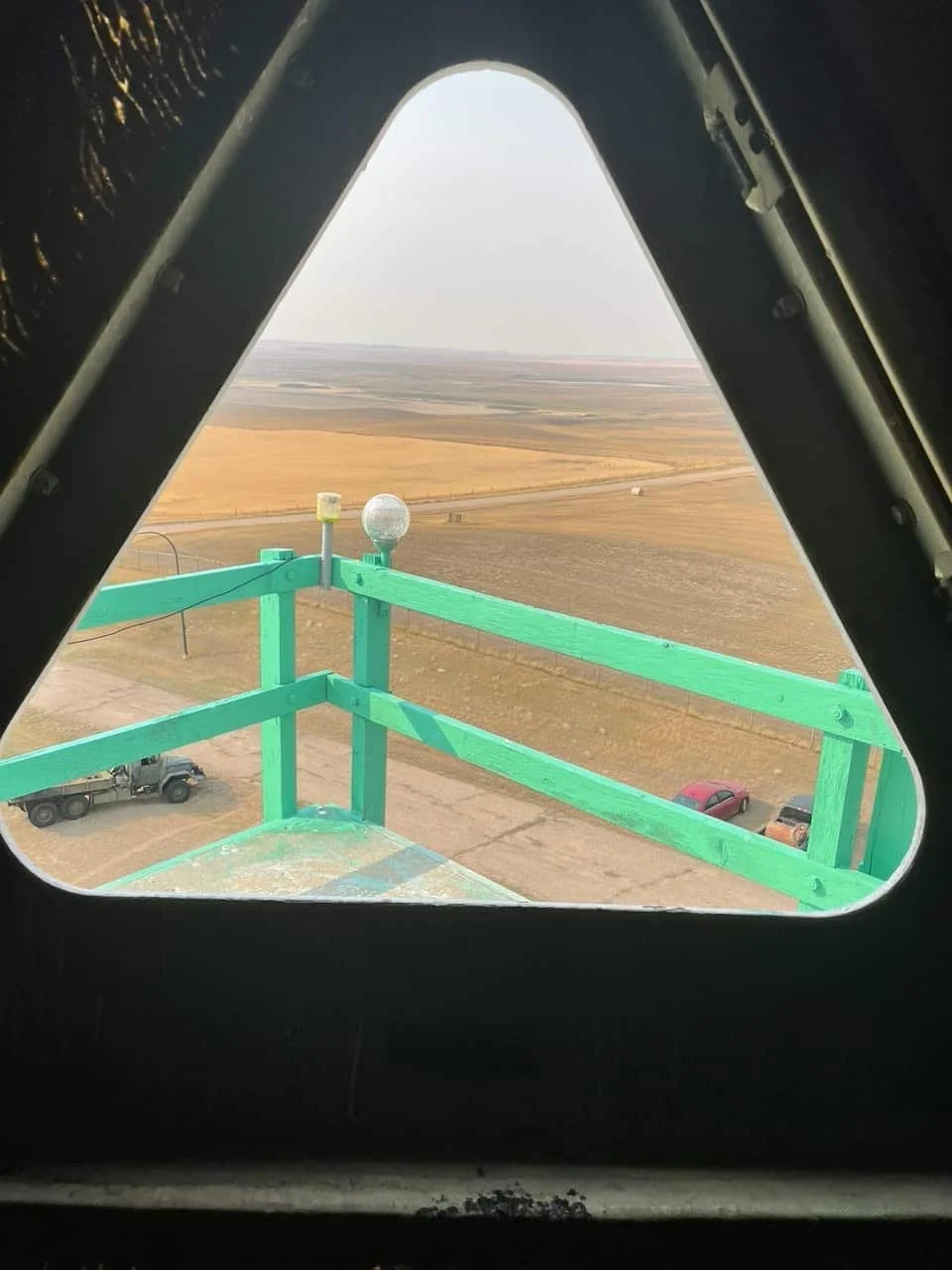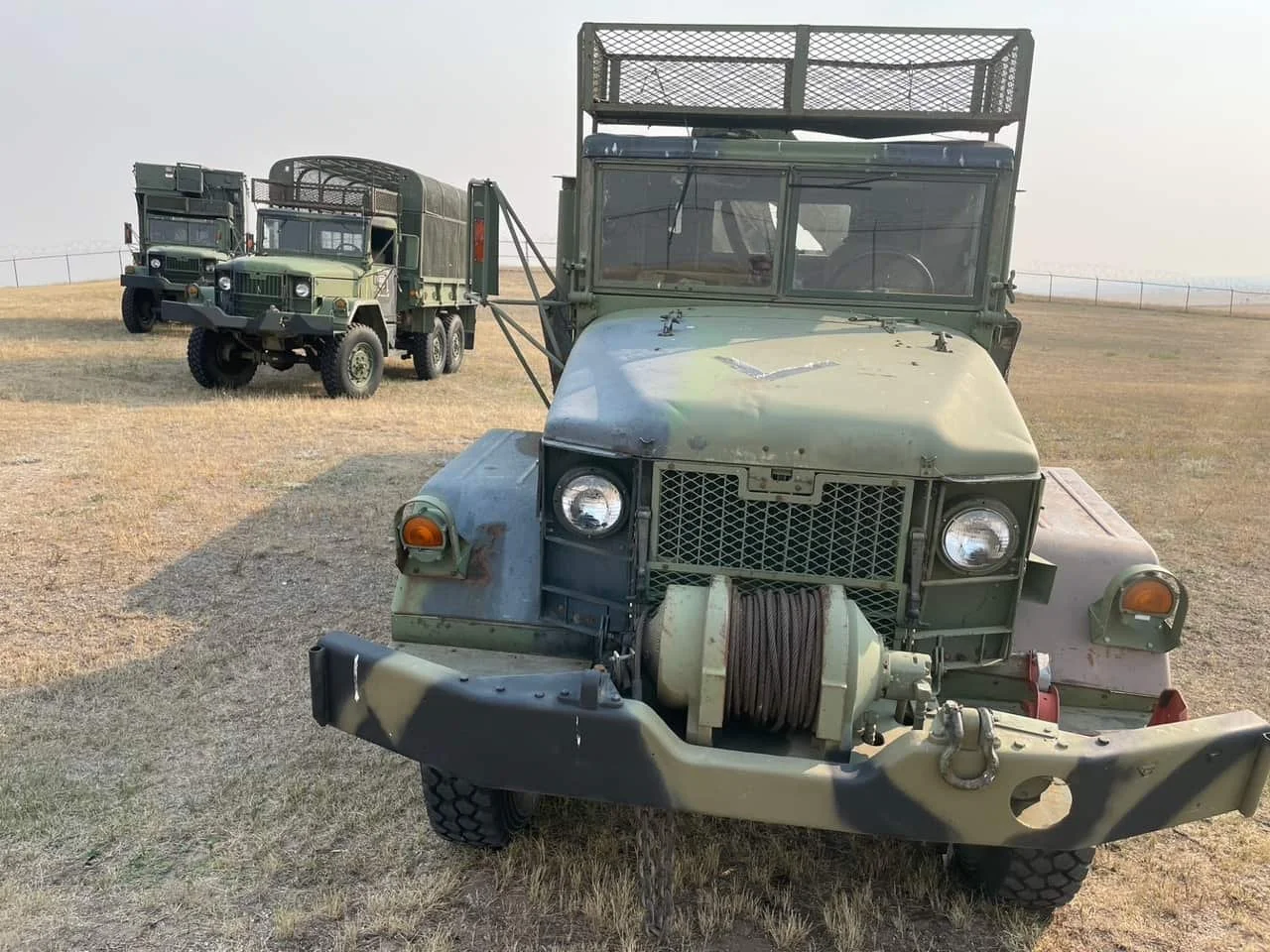Sharing history is preserving history at CFS Alsask
By Joan Janzen
The Canadian Civil Defence Museum Association conducted tours of the Canadian Forces Station (CFS) Alsask dome on Sunday, September 4th. The tour was led by the Executive Director and Founder, Fred Armbruster, with additional tours scheduled on long weekends.
The museum association is a non-profit charitable organization which operates solely on the donations of generous individuals and businesses. Its objective is to preserve Canada’s Civil Defence Cold War emergency preparedness history.
Throughout the tour, Armbruster would periodically share his favourite quote, “Sharing history is preserving history.” The history includes the construction of the CFS Alsask dome just north of Alsask during the summer of 1961 until its completion in December of 1962.
Click for larger images and photo captions
A dozen curious individuals drove through the gate to the museum property, which is under 24-hour remote surveillance. Three MLVW military 2 1/2 ton vehicles are parked on the grounds. According to Armbruster, these vehicles run and drive like the day they came from the factory and were procured through the generous donations of various businesses. These vehicles are not only an exhibit but are put to work in the restoration process.
The Canadian Civil Defence Museum Assoc. took over the property in June 2018. “We inherited a mess,” Armbruster said. The property was covered with waist-high weeds, which were mowed down by a landscaping company out of Edmonton. The dome had been taken over by squatters (pigeons), which had to be evicted, and the massive amount of pigeon poop had to be removed. It was a huge undertaking, requiring a lot of heavy labour by some very dedicated volunteers.
The first floor of the dome’s interior housed the transmitter equipment, while the receiver equipment was located on the second floor. All of the equipment has been removed, but Armbruster said the large operating computers generated a good deal of heat. While it was operational, the station had approximately 40 employees, who were much like a close-knit family working in this isolated location.
After climbing a ladder, the tourists landed on the third floor of the fibreglass dome, where fibreglass panels protected the radar equipment from the wind and the weather. Original equipment included the FPS-7C Search and the FPS-507 and FPS-206 Height Finder radars. The giant remains of the radar assembly dominates the room. When it was operational, it would make a slow and continuous rotation.
Every Friday, the equipment would be tested with the unannounced arrival of a fighter jet from Cold Lake. A local land owner who attended the tour remembers low-flying jets flying over his farm.
Armbruster said Alsask was one of the first communities to receive cable television because the dome’s equipment would interrupt the television signal. He also described how a summer student would paint the gold exterior of the dome in the 1960s, using only a platform and a rope. In the winter, brave individuals would remove snow from the dome while walking on the catwalk.
The Alsask station was disbanded in August of 1987, and the land was sold to the Village of Alsask. The museum association took over the property in 2018 and a year later began conducting tours to the general public. The museum association also shares this portion of history online. Their online archives and gallery tell the full story of the Cold War when the Canadian and American governments monitored Soviet activity in the North American airspace.






